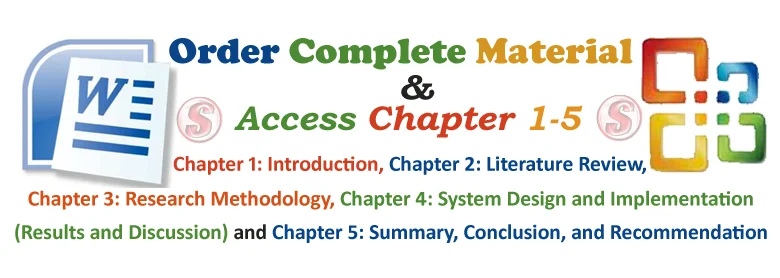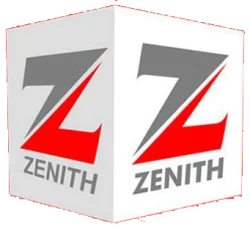1.1 Introduction
Fixed assets management is an accounting process that seeks to track fixed assets for the purposes of financial accounting, preventive maintenance, and theft deterrence. Many organizations face a significant challenge to track the location, quantity, condition, maintenance and depreciation status of their fixed assets. A popular approach to tracking fixed assets utilizes serial numbered Asset Tags, often with bar codes for easy and accurate reading. Periodically, the owner of the assets can take inventory with a mobile barcode reader and then produce a report. Off-the-shelf software packages for fixed asset management are marketed to businesses small and large. Some Enterprise Resource Planning systems are available with fixed assets modules. Some tracking methods automate the process, such as by using fixed scanners to read bar codes on railway freight cars or by attaching a radio-frequency identification (RFID) tag to an asset.
As a prelude to other parts of this study, this chapter will discuss the background upon which this study was initiated, the statement of problems that led to this study, the Aim and Objectives of the study. Others are Significance of the study, Scope of work, Limitations of the Study and Definition of technical terms.
1.2 Background of Study
With advancements in technology, asset tracking software is now available that will help any size business track valuable assets such as equipment and supplies. According to a study issued in December, 2005 by the ARC Advisory Group, the worldwide market for Enterprise Asset Management (EAM) was then at an estimated $2.2 billion and was expected to grow at about 5.0 percent per year reaching $2.8 billion in 2010.
Tracking assets is an important concern of every company, regardless of size. Fixed assets are defined as any ‘permanent’ object that a business uses internally including but not limited to computers, tools, software, or office equipment. While employees may utilize a specific tool or tools, the asset ultimately belongs to the company and must be returned. And therefore without an accurate method of keeping track of these assets it would be very easy for a company to lose control of them.
Fixed asset management information system is a sub-operation in financial accounting that take care of the degeneration of asset usefulness because of this responsibility. Asset management and depreciation is very important in any organization. Asset management and deprecation is a content of every balance sheet and then proper attention should be given on how asset are depreciated to provide complete and accurate information that will assist management in planning and policy making. This is why it is important to design a fixed asset management information system.
Asset tracking software allows companies to track what assets it owns, where each is located, who has it, when it was checked out, when it is due for return, when it is scheduled for maintenance, and the cost and depreciation of each asset. The reporting option that is built into most asset tracking solutions provides pre-built reports, including assets by category and department, check-in/check-out, net book value of assets, assets past due, audit history, and transactions.
All of this information is captured in one program and can be used on PCs as well as mobile devices. As a result, companies reduce expenses through loss prevention and improved equipment maintenance. They reduce new and unnecessary equipment purchases, and they can more accurately calculate taxes based on depreciation schedules. The most commonly tracked assets are: Office Equipment, Evidence, Medical Equipment, IT Equipment, for example laptops, Vehicles, Files, Maintenance supplies, Educational materials, Software licenses, Videos and Tools.
1.3 Statement of Problem
Investigation revealed that there is limited number of staff working in the account department which makes the existing asset account to be delegated to some staff by their departmental heads at the end of each period. The handling of Asset Account by numerous staff creates positing error omission error and inaccurate calculated results.
Apart from that, there is no adequate record storage and disposal system which resulting in non-documentation of some existing asset are as well as continuous recording of scrapes. However, the method of asset depreciation being used in the existing system is ineffective.
In fact, the researcher shall by the end of this project provide a suitable solution to the pressing problems of fixed asset value and depreciation.
1.4 Aim and Objectives of the Study
The aim of the study is to design and implement a Fixed Assets Management System using IMT Enugu as a case study. In achieving this aim, the following specific objectives were laid out as follows to develop an application software that will:
- Facilitate an online recording and modifying of assets using electronic keyboard.
- Enhance automatic depreciation of an asset, proper storage and speedy retrieval any asset value.
- Accurately record assets and assist staff in planning and decision-making.
- Provide management with various reports on depreciation expenses and accumulated depreciation at the end of every period.
1.5 Significance of Study
This study will be of immense benefit to Enterprises, Shopping Malls/Supermarkets, many large companies and other researchers who intend to know more on this study and can also be used by non-researchers to build more on their research work. This study contributes to knowledge and could serve as a guide for other study.
1.6 Scope of Study
The scope of the research is focused on the Design and Implementation of Fixed Assets Management System using IMT Enugu as a case study.
1.7 Limitations of the Study
During the course of this study, many things militated against its completion, some of which are:
- Time Constraint: The time frame given to accomplish this project was very short due to school academic calendar and it was carried out under pressure which made the researcher not to implement some necessary features.
- Establishment Policies: Establishment policies posed a serious limitation as most staffs are not ready to release information needed for this project work. There were lots of information needed from the staffs of this institution to enhance the study which took them time to release or they did not release at all for security purposes, hence the scope was reduced.
- Research material: availability of research material is a major setback to the scope of the study.
- Frequent power failure: This made the researcher append more money on fuel to ensure sustainable power.
- Financial Constraint: Insufficient fund tends to impede the efficiency of the researcher in sourcing for the relevant materials, literature or information and in the process of data collection (internet).
1.8 Definition of Terms
Asset Management: It is defined as something that is systematic and coordinates activities through practice so that an organization can optimally regulate its physical assets and show their performance in accordance with the organization's strategic planning (NSW Department of Local Government, 2006).
Registration: This means to keep records received from the management for reference purposes.
Management: It is the co-ordination of all the resources of an Organization through the process of planning, Organization, directing and controlling




